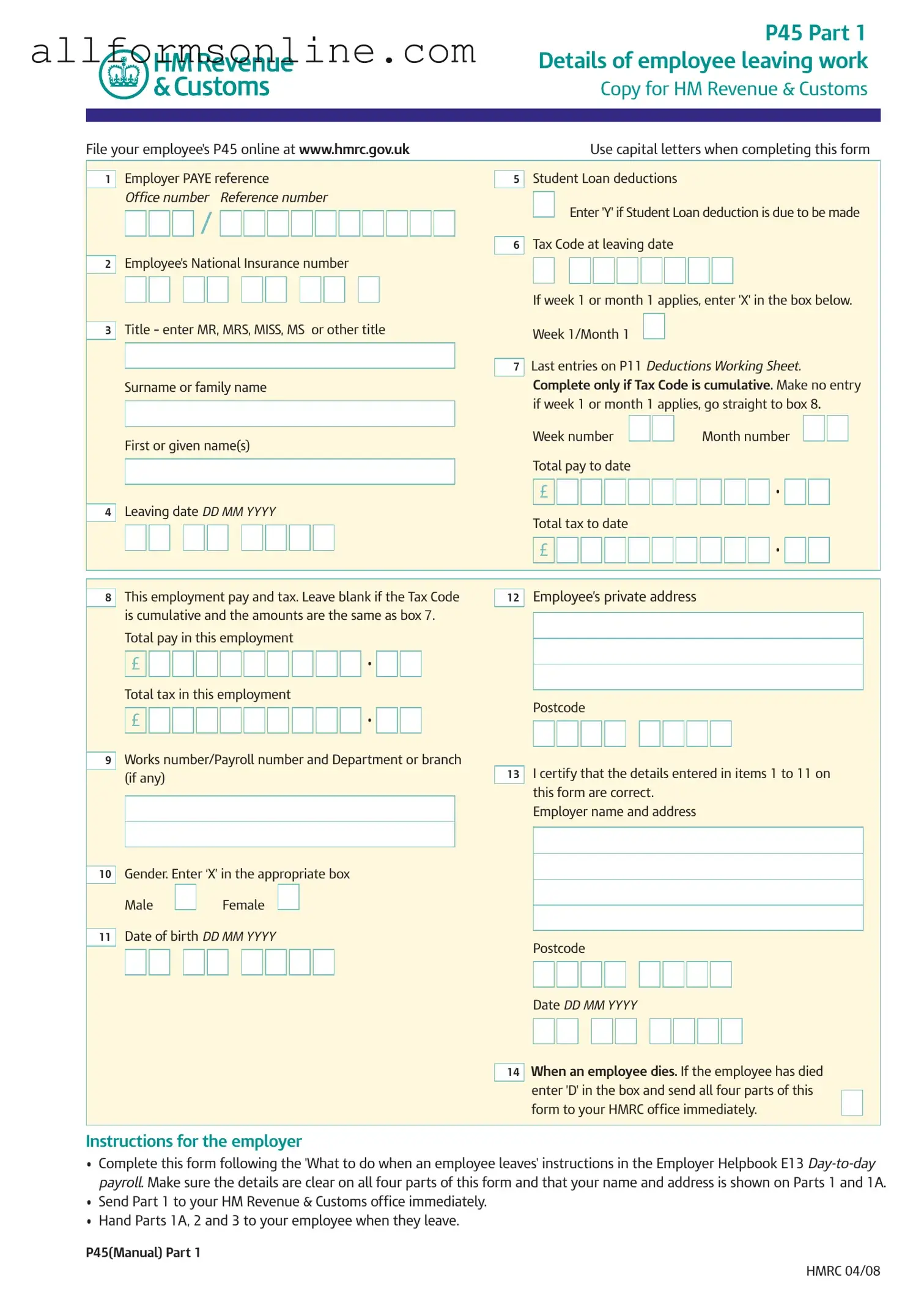What is the P45 form?
The P45 form is an official document that an employer provides to an employee when they leave a job. It details the employee's pay and tax deductions up to their leaving date. The P45 is essential for the employee's tax records and is used when starting a new job or applying for benefits.
What parts does the P45 form consist of?
The P45 form consists of three parts: Part 1, Part 1A, and Part 2. Part 1 is sent to HM Revenue & Customs (HMRC) by the employer. Part 1A is given to the employee, and Part 2 is provided to the new employer. Each part contains important information regarding the employee's tax and pay details.
How should I complete the P45 form?
When completing the P45 form, use capital letters for clarity. Ensure that all required fields are filled out accurately, including the employee's National Insurance number, tax code, and total pay and tax amounts. If the employee is on a week 1 or month 1 tax code, mark the appropriate box. Double-check all entries for correctness before submitting or distributing the form.
What should an employee do with their P45?
An employee should keep Part 1A of the P45 safe, as it may be needed for tax returns or when starting a new job. Parts 2 and 3 should be given to the new employer to ensure correct tax deductions. If the employee does not want their new employer to see the details, they can send the form directly to HMRC with a request for confidentiality.
What if an employee dies?
If an employee passes away, the employer must enter 'D' in the designated box on the P45 form and send all four parts to HMRC immediately. This ensures that the employee's tax affairs are handled appropriately and in a timely manner.
What happens if I do not receive my P45?
If you do not receive your P45 after leaving a job, you should contact your former employer to request it. It is important to obtain this document for your tax records. If you encounter difficulties, you can reach out to HMRC for assistance in obtaining the necessary information.
Can I use the P45 form for tax refunds?
Yes, the P45 form can be used to claim tax refunds. If you have overpaid tax, you can present your P45 to HMRC when applying for a refund. Additionally, if you are not working and wish to claim a refund, you may need to complete a separate form, such as the P50, to initiate the process.
